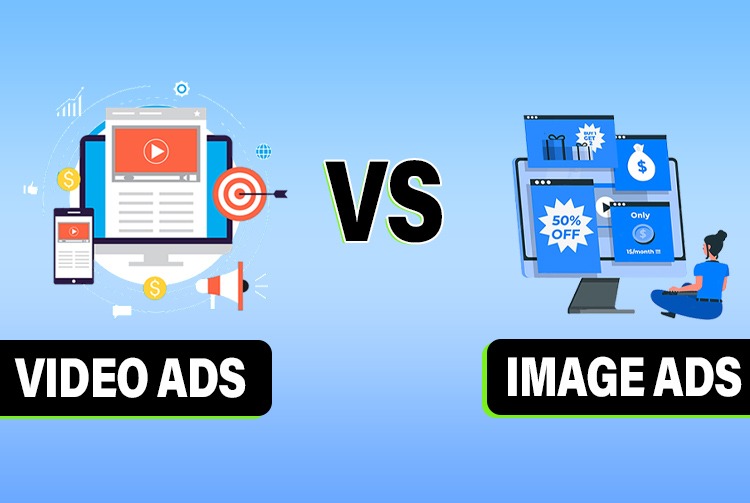Video Ads Vs. Image Ads: Which Is Better For Business Promotions
Digital advertising has grown rapidly in recent years. Currently, video and image advertisements outperform television promotions. What a great time to compare video ads vs image ads! what is the difference between video ads vs image ads? Is one style of advertisement more effective than the other? Which one generates the greatest revenue?
We will discuss these and more in this article!
Video Ads Vs. Image Ads
Video ads are a marketing strategy that entails using a brief and informative clip to sell a product before, during, or after the main video. It helps in telling the story, increasing sales volume, creating buzz, conveying information concisely and excitingly, and reaching a large audience.
While an image ad is made up of an image that you offer that contains information about your company, services, or products. People who click anywhere on your ad will be directed to your website.
What are more engaging, video or image ads?
When marketing a product, every company will aim to reach as many individuals as possible. But which type of advertising is better?
Pros and Cons of image advertisement:
Advantages of image ads
- Visual
Depending on the images used by a brand, the advertisement can be so appealing that consumers stop scrolling through their social media feeds and become engaged in the image. The most difficult element is capturing a user's attention, and the appropriate image may stop individuals in their tracks.
- Target
Although video advertisements are becoming more popular, picture advertisements are more widely accessible and less expensive. As a result, it is simpler to reach your target audience because your spending will result in more opportunities overall for your advertisement to be viewed.
Disadvantages of image ads
- Lower conversions
A lower CTR translates to fewer conversions, such as sales and registrations. Because people aren't actively shopping for your items or services when they see your ad, they may not be ready to buy. Image ads are more suited for extended sales procedures than for selling large quantities.
- Ad avoidance
While your impressions may be high, you cannot guarantee that your ad was noticed. Ad blocking software might potentially prevent users from viewing your ads.
Pros and Cons of video advertisement:
Video advertisements have many more advantages than image advertisements.
- Cost of outreach
In the past, commercial television stations would only air video advertisements during commercial breaks. Many businesses would use this opportunity to advertise their products, but doing so would be very expensive, costing tens of thousands of pounds or dollars for a 15 or 30-second spot.
However, as social media marketing has taken over as the primary medium for video marketing, businesses can now save costs, market their products online, and be confident that they are reaching a large audience—often more than an identical television commercial can.
- High engagement level
People prefer watching video advertisements to viewing still images, and 43% say they'd like to see more corporate videos in the future. And more individuals are acting and purchasing the things they have seen as a result of the rise in video advertisements. According to a Google study, conversions from YouTube video advertising increased by 150%.
In short, video advertisements convert at considerably higher rates than image advertisements.
Disadvantages of video ads
- Cost of production
Of course, the production costs of video commercials are more than those of image ads. At first glance, this appears to be a disadvantage; nevertheless, focusing just on production costs is incorrect.
Although having a space on social media may be less expensive than having a spot on prime-time television, production can be costly. Companies will spend money on equipment, people, location, and other things. It stands to reason, then, that before creating a video to sell their product, a company should ensure that they would be able to make enough profit to cover the higher advertising expense.
Video content performs better than graphic content. But doing both typically pays off if a business wants to maximize its return on investment when it comes to advertising. While some clients prefer images to videos, others do not. In almost all cases, a well-planned marketing strategy utilizing both media performs best.
Conclusion
That’s all for now. This is where this article will come to a conclusion. So, are video advertisements more effective than image advertisements? According to our results, the answer is an absolute yes! Video posts receive 38% higher interaction than photos. According to the previously stated article, video advertisements receive three times more engagement than picture advertisements.


